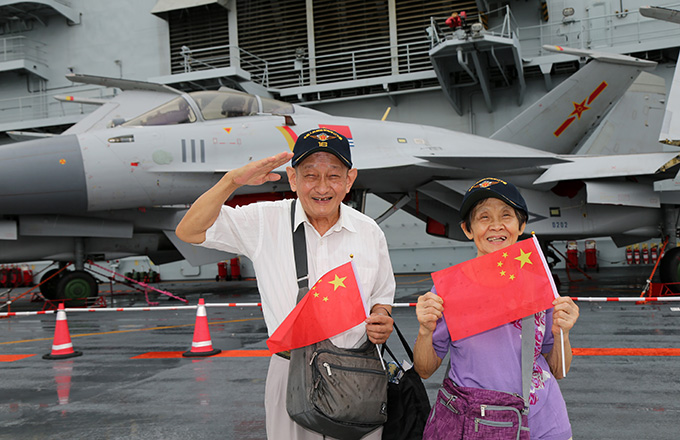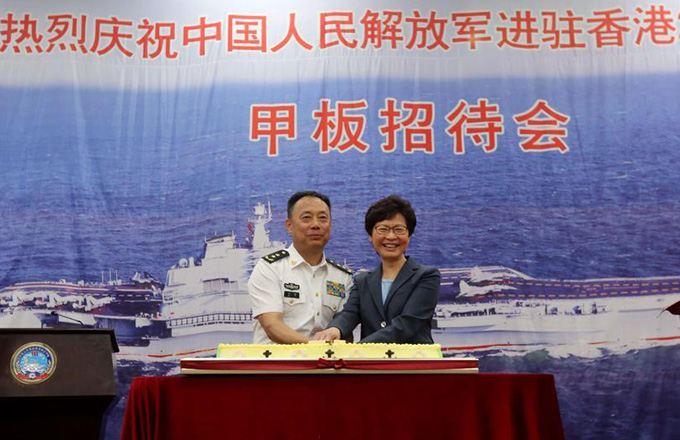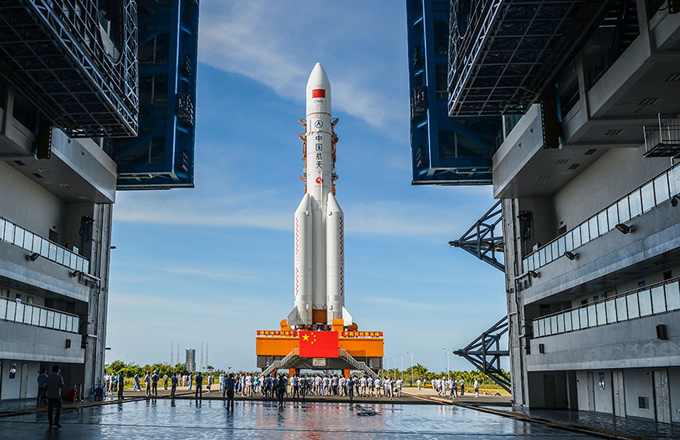New solid-fuel carrier rocket to be ready by 2018
China is developing a carrier rocket that can be launched from ships at sea, according to a rocket scientist.
Tang Yagang, deputy director of carrier rocket development at the China Academy of Launch Vehicle Technology in Beijing, told reporters on Thursday that the rocket is being developed based on the academy's existing solid-fuel rocket and will be capable of sending a 500-kilogram satellite to a sun-synchronous orbit about 500 kilometers above Earth.
The academy only has one type of solid-fuel rocket-the Long March 11-which conducted its first mission in September 2015 and a second in November 2016.
"We plan to conduct some tests this year to verify the new rocket's design and technologies, and will put it on the market in 2018," he said on the sidelines of a conference in Beijing for users of China's Long March carrier rockets, held by China Great Wall Industry Corp, the nation's only authorized firm for international space collaboration.
Tang said that the new solid-fuel rocket will be launched from ships and will mainly carry out space launches for nations near the equator.
"This is especially suitable for those countries because a satellite launched near the equator will orbit above that line, so users along the equator will have more time each day to receive its data," Tang said. "Another advantage is that a sea-based launch involves fewer risks compared with launching over populated regions. Moreover, there is less chance of conflict with air traffic, increasing safety."
He added that compared with liquid-fuel rockets, a solid-fuel rocket requires less support from the launch facility. "Therefore we only need to refit a conventional cargo ship that has a displacement of 10,000 metric tons, which basically means installing a launchpad on it."
In addition, Tang said the Long March 8 medium-lift carrier rocket that is under development at his academy will conduct its first flight in around 2019.
Designers at the academy previously said the Long March 8 would satisfy the needs of commercial launches in domestic and international markets. It will be capable of sending about 4.5 metric tons of payload to a sun-synchronous orbit or 2.5 tons to a geosynchronous transfer orbit, according to researchers.
Fu Zhiheng, vice-president of China Great Wall Industry Corp, said his company has been sparing no efforts to promote the country's new-generation rockets.
"Our new-generation Long March 6 and Long March 11 can carry out a launch after a short time of preparation so are attractive to many clients," he said. "The sea-based launch service will also have good prospects because it meets some clients' requirements, and currently, there is no such service on the international market."
- Bullet train connects NW region to the rest of China
- China investigates 140 insider trading cases in H1
- Suspect identified as policeman in east China hit-and-run
- China calls for more G20 efforts on African development, digital economy
- Supporting Africa's development conducive to balanced growth: Xi


















